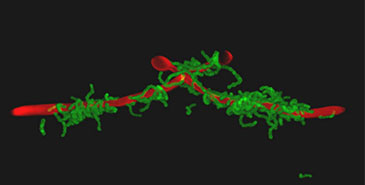The study, led by Professor Howard Jenkinson and Dr Angela Nobbs in the Oral Microbiology Research Group from the University of Bristol’s School of Oral and Dental Sciences, is published in the open access journal mBio.
In the human mouth microorganisms form communities known as biofilms, which can stick to teeth, gums, tongue and dentures, and where the fungus Candida albicans can be found.
The research group focused on the process by which C. albicans becomes integrated into these communities containing bacteria, such as Streptococcus, as this is often the first step in the development of Candida infections.
The study found that impairment of early stage addition of mannose sugars to C. albicans hyphal filament proteins has a harmful effect on the ability of C. albicans to integrate into polymicrobial biofilms.
Howard Jenkinson, Professor of Oral Microbiology in the School of Oral & Dental Sciences, said: “Candida albicans is becoming an increasingly serious problem in hospital infections. The fungus is responsible for almost 90 per cent of human fungal infections and is now the third most common infection to be acquired in hospitals.”
The research was funded by the National Institutes of Health, Bethesda. The work has involved collaborators in the USA (University of Louisville) and at the University of Aberdeen, and extensive confocal microscopy performed at the University of Bristol Wolfson Bioimaging Facility by Dr Mark Jepson and his team.
Paper: O-Mannosylation in Candida albicans Enables Development of Inter Kingdom Biofilm Communities, Lindsay C. Dutton et al. 2014, mBio, March/April 2014, Volume 5, Issue 2.
